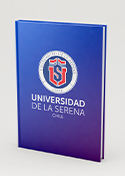Light pollution indicators for all the major astronomical observatories

Date
2022-12-20
Journal Title
Journal ISSN
Volume Title
Publisher
Oxford Academic
Abstract
Light pollution at astronomical observatories is one of the main factors to be taken into account to preserve their scientific productivity and their useful lifetime. Using the Garstang–Cinzano model applied to the Visible Infrared Imaging Radiometer Suite (VIIRS) 2021 satellite radiance data, we have compared 28 sites, all hosting telescopes with apertures larger than 3 m, plus some additional selected sites. We computed and analysed five indicators of light pollution: radiance at zenith; averaged at 60° zenith distance; averaged over all the sky; averaged in the first 10° above the horizon; and horizontal irradiance. We found large variations of the values of the indicators, with a factor greater than 600 for the zenith artificial radiance between the least and most polluted major observatories. The results show that two-thirds of all large observatories have already surpassed the critical 10 per cent increase in radiance over the assumed natural levels. The results presented and the method described here can help to plan countermeasures in order to lower the impact of light pollution on observatories. These same methods can be also used to protect the night environment from the impact of artificial light (e.g. on biodiversity, on animal behaviour and physiology, on human health).
Description
Keywords
Citation
Fabio Falchi, Felipe Ramos, Salvador Bará, Pedro Sanhueza, Marcelo Jaque Arancibia, Guillermo Damke, Pierantonio Cinzano, Light pollution indicators for all the major astronomical observatories, Monthly Notices of the Royal Astronomical Society, Volume 519, Issue 1, February 2023, Pages 26–33, https://doi.org/10.1093/mnras/stac2929